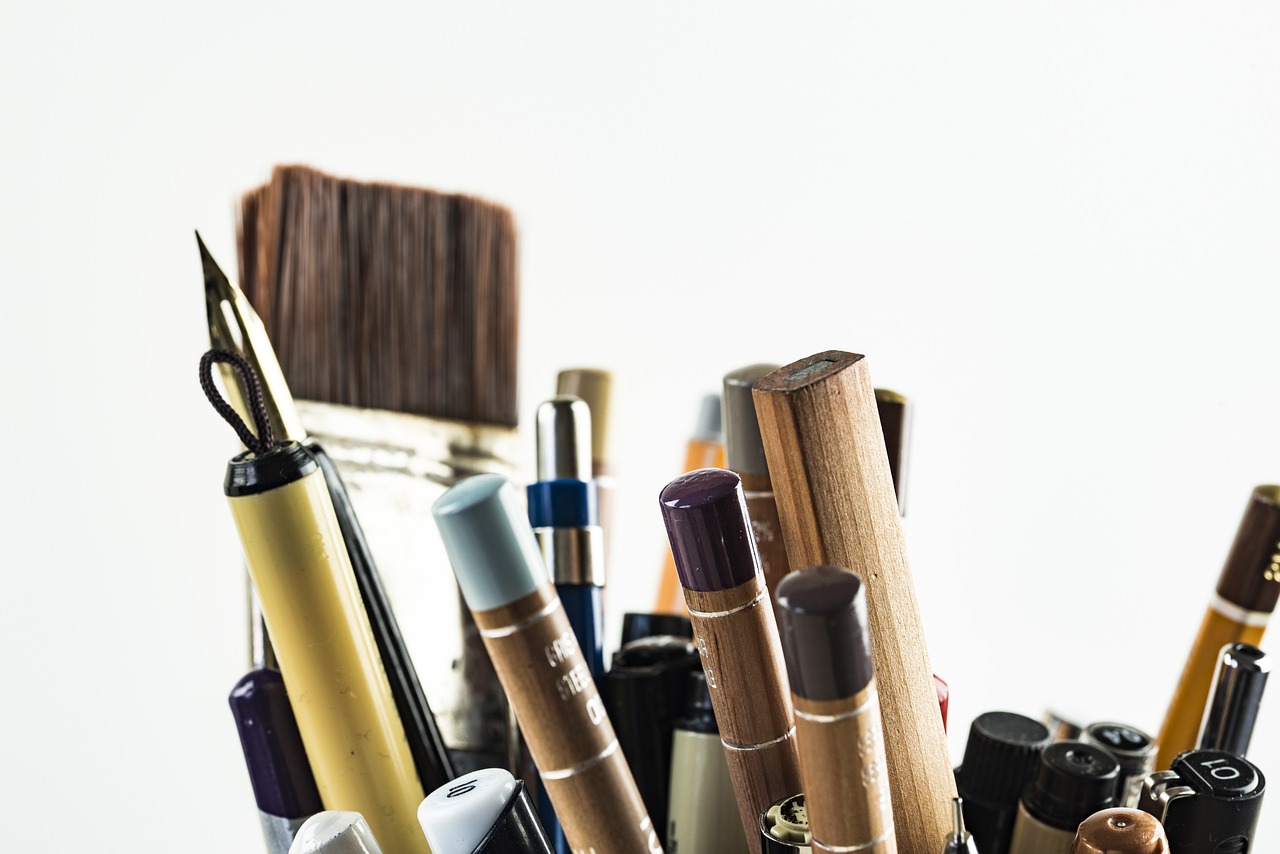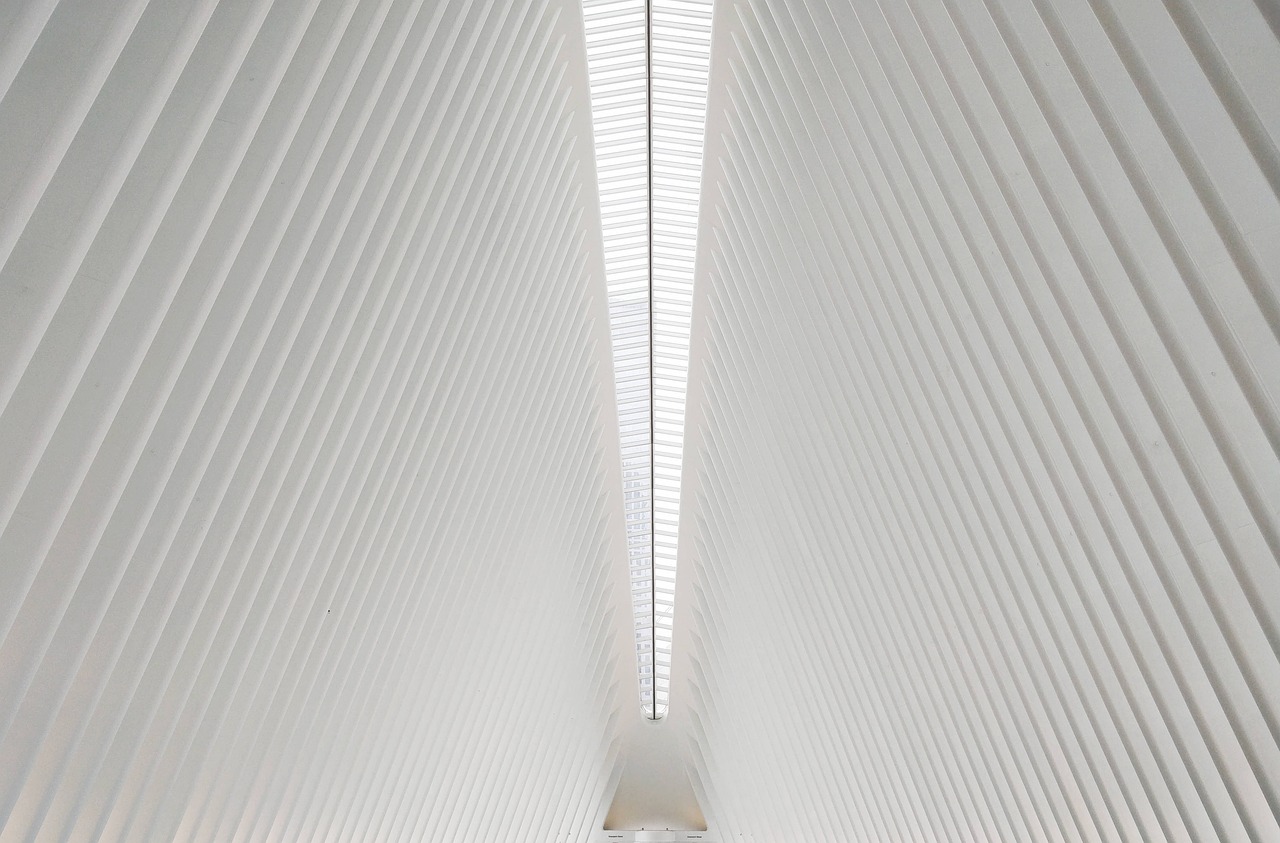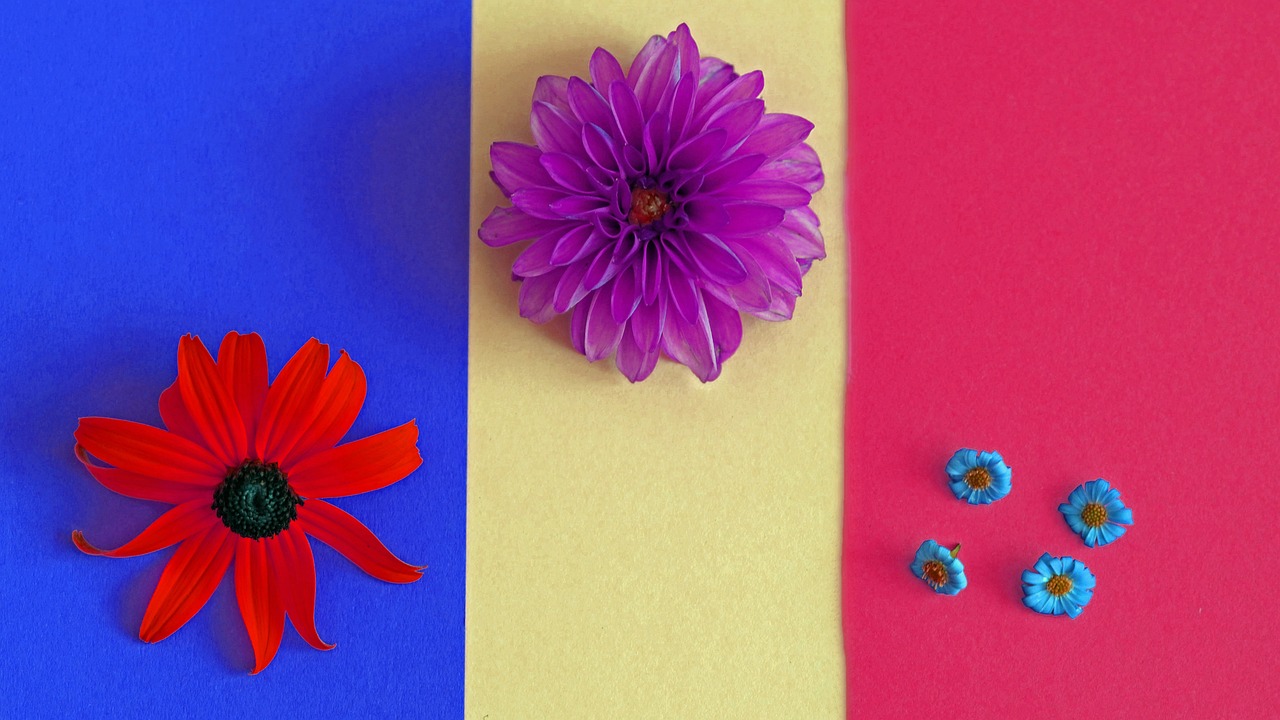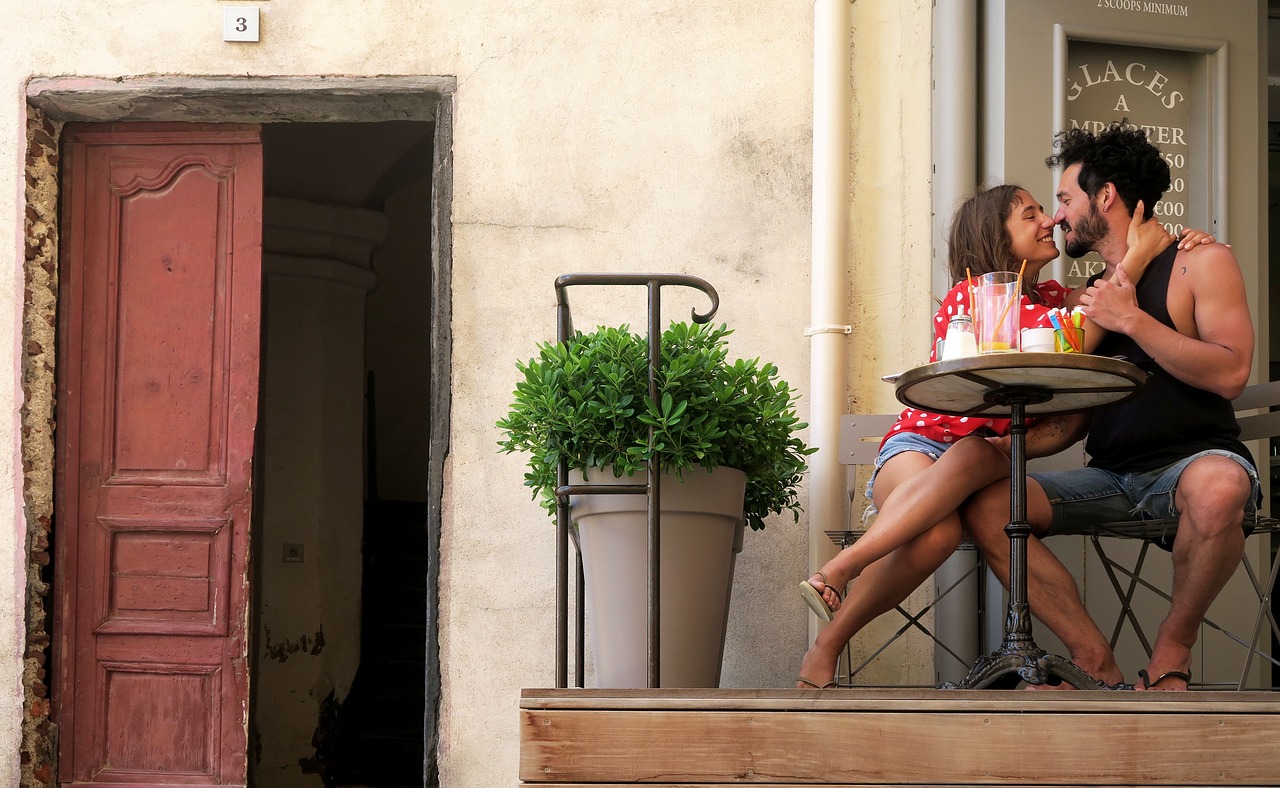Understanding Composition for Drawing and Painting
When diving into the world of visual arts, one cannot underestimate the power of composition. It's the backbone of any drawing or painting, shaping the way we perceive and interact with the artwork. Think of composition as the blueprint for your creative expression; without a solid structure, even the most vibrant colors and intricate details can fall flat. So, what exactly is composition, and why is it so important?
At its core, composition refers to the arrangement of visual elements within a piece of art. This includes everything from the placement of objects to the use of space, color, and line. A well-composed artwork can lead the viewer's eye through the piece, creating a dynamic experience that tells a story or evokes emotion. It’s like a well-choreographed dance, where every movement has a purpose and direction.
Consider how you feel when you look at a painting. Do your eyes linger on certain areas? Are you drawn to the bright colors or the intricate details? This is the work of composition at play. By understanding its principles, you can enhance your skills, making your drawings and paintings not just visually appealing, but also emotionally resonant. So, let's explore the fundamental principles of composition that can elevate your artistic game!
Composition is crucial in art as it guides the viewer's eye and conveys the intended message. It’s not just about placing objects on a canvas; it’s about creating a visual narrative. A well-composed piece can evoke feelings of harmony, chaos, joy, or sadness, depending on how the elements are arranged. Think of it as setting the stage for a performance; the way you arrange your elements can set the tone for the entire experience.
Without a strong composition, your artwork might lack focus, leaving viewers confused or uninterested. Imagine trying to tell a story without a clear beginning, middle, or end. The same principle applies to visual arts. By mastering composition, you can create artworks that not only capture attention but also hold it, making the viewer want to explore every inch of your creation.
Key elements such as line, shape, color, and texture play a vital role in composition. Each element contributes to the overall harmony and effectiveness of your artwork, influencing how viewers perceive it. Let’s break down these elements further:
| Element | Impact on Composition |
|---|---|
| Line | Creates movement and directs attention. |
| Shape | Defines forms and structures within the artwork. |
| Color | Affects mood and emotional response. |
| Texture | Adds depth and tactile quality to the piece. |
Understanding how these elements interact can significantly enhance your artistic abilities. For instance, using contrasting colors can draw attention to a focal point, while soft, flowing lines can create a sense of calm and tranquility. The possibilities are endless, and each choice you make in your composition can lead to vastly different outcomes.
Lines are one of the most fundamental elements of composition. They can create movement and direct attention within a composition. Imagine a winding road leading you through a landscape; it guides your journey and keeps you engaged. Similarly, in art, lines can lead the viewer's eye from one element to another, creating a sense of flow and continuity.
Different types of lines, such as horizontal, vertical, and diagonal, evoke varied emotions and responses. For example:
- Horizontal lines often convey tranquility and stability.
- Vertical lines can suggest strength and growth.
- Diagonal lines create a sense of movement and dynamism.
Knowing how to use them effectively can significantly impact the composition's overall feel. So, experiment with different lines and see how they change the mood of your artwork!
Achieving a sense of flow in your artwork is essential for guiding the viewer's eye. Techniques like leading lines and rhythmic patterns can help create a cohesive visual journey. Just like a well-written story, your artwork should have a natural progression that keeps the viewer engaged from start to finish.
Color plays a critical role in composition, affecting mood and focus. Understanding color theory can help you create more balanced and harmonious artworks. By learning how colors interact with each other, you can make informed decisions that enhance the emotional impact of your work.
Achieving balance in composition is vital for creating a sense of stability. Techniques such as symmetrical and asymmetrical balance can dramatically affect the visual impact of your artwork. Symmetrical balance often creates a sense of order and calm, while asymmetrical balance can add excitement and energy to your piece.
Knowing when to use each type can enhance the effectiveness of your composition. For instance, if you're aiming for a serene landscape, symmetrical balance might be your best bet. On the other hand, if you’re creating an action-packed scene, asymmetrical balance could better convey the energy and movement.
Negative space, or the area around and between subjects, is essential for composition. It can help define shapes and create a more engaging visual experience. Think of it as the silence in a piece of music; it’s just as important as the notes themselves. By thoughtfully incorporating negative space, you can enhance the overall design of your artwork and lead the viewer's eye to the focal points.
Q: What is the most important aspect of composition?
A: While all elements of composition are important, understanding how to create balance is crucial for achieving a visually appealing artwork.
Q: How can I improve my composition skills?
A: Practice is key! Experiment with different arrangements, study the works of master artists, and always seek feedback on your compositions.
Q: Is there a specific rule for composition?
A: There are guidelines, such as the rule of thirds, but creativity should always take precedence. Don’t be afraid to break the rules to create something unique!

The Importance of Composition
Composition is the backbone of any artwork, whether it’s a drawing, painting, or even a photograph. It’s like the blueprint of a house—without it, everything can feel chaotic and uninviting. When you understand the importance of composition, you unlock the potential to create pieces that are not just visually appealing but also tell a story. Think about it: have you ever looked at a piece of art and felt instantly drawn to it? That’s the magic of composition at work!
At its core, composition is about how you arrange the various elements within your artwork. It guides the viewer's eye, directing them to where you want them to look and what you want them to feel. Just like a well-written novel, a well-composed piece of art has a beginning, middle, and end, leading the viewer on a visual journey. Without this structure, your artwork might fail to communicate effectively, leaving viewers confused or disinterested.
Moreover, composition can significantly influence the emotional response of the audience. Consider how different arrangements can evoke different feelings. For instance, a tightly packed composition can create a sense of chaos or urgency, while a more open layout might convey tranquility and spaciousness. This emotional resonance is crucial for artists who want to connect with their audience on a deeper level.
Here are a few key reasons why mastering composition is essential for any artist:
- Guides the Viewer’s Eye: A good composition leads the viewer's eye through the artwork, ensuring they notice all the important details.
- Establishes Focus: It helps in defining what the focal point of the artwork is, making sure that the viewer knows where to look first.
- Enhances Storytelling: Composition can add layers to the narrative of your artwork, allowing for a richer experience.
- Creates Harmony: By balancing elements effectively, composition contributes to the overall harmony of the piece, making it more enjoyable to look at.
In conclusion, understanding composition is not just a technical skill; it’s an art form in itself. It’s about making deliberate choices that enhance your artwork's message and aesthetic appeal. So, the next time you pick up a brush or pencil, take a moment to think about how you can use composition to elevate your work. After all, in the world of art, composition isn't just important—it's everything!
Q: What is composition in art?
A: Composition in art refers to the arrangement of elements within a piece, guiding the viewer's eye and conveying the intended message.
Q: Why is composition important?
A: Composition is crucial because it affects how viewers perceive and interact with the artwork, influencing their emotional response and understanding of the piece.
Q: Can I learn composition techniques?
A: Absolutely! Many resources, including books, online courses, and workshops, can help you understand and master composition techniques.
Q: What are some common composition techniques?
A: Common techniques include the rule of thirds, leading lines, balance (symmetrical and asymmetrical), and the use of negative space.

Elements of Composition
When we talk about the , we're diving into the very building blocks that make your artwork come alive. Think of composition as the backbone of your drawing or painting; without it, your piece might just feel like a jumbled mess. The key elements—line, shape, color, and texture—play a pivotal role in how effectively your message is conveyed and how engaging your artwork is to the viewer. Just like a good recipe needs the right ingredients, a compelling piece of art needs these elements to harmonize beautifully.
First up, we have line. Lines are not just mere strokes on a canvas; they are the pathways that guide the viewer’s eye throughout the artwork. They can evoke emotions, create movement, and even define shapes. For instance, a series of sharp, jagged lines might convey chaos or tension, while soft, flowing lines can evoke calmness and serenity. Understanding how to manipulate these lines is crucial for creating dynamic compositions that resonate with your audience.
Next, let’s discuss shape. Shapes are the building blocks of your composition, forming the foundation upon which your artwork is built. They can be geometric, like squares and circles, or organic, like the curves of a leaf or the silhouette of a person. The combination of different shapes can create a sense of balance or imbalance, tension or harmony. For example, a circle can evoke feelings of unity and wholeness, while a triangle can suggest movement and direction. By thoughtfully arranging shapes, you can guide the viewer’s perception and emotional response.
Now, let’s not forget about color. Color is perhaps one of the most powerful elements of composition. It has the ability to set the mood and influence the viewer's emotional experience. Warm colors like reds and oranges can evoke energy and excitement, while cool colors like blues and greens can create a sense of calm and tranquility. Understanding color theory—the relationships between colors and how they interact—can help you create a more balanced and harmonious composition. For instance, complementary colors can create striking contrasts that draw the viewer's eye, while analogous colors can provide a sense of cohesion and unity.
Lastly, we have texture. Texture adds depth and interest to your artwork, making it feel more tangible and real. It can be actual texture, which you can feel with your fingers, or implied texture, which is visual and can only be seen. Think about how the rough texture of a tree bark can contrast with the smooth surface of water in your painting. This interplay can create a rich visual experience that captivates the viewer. By incorporating various textures, you can enhance the overall impact of your composition, making it more engaging and dynamic.
In summary, the elements of composition—line, shape, color, and texture—are essential in creating compelling artwork. By understanding how to use these elements effectively, you can elevate your drawings and paintings from simple images to powerful visual narratives that resonate with your audience.
- What is the most important element of composition?
While all elements are important, many artists consider line to be the most crucial as it directs the viewer's eye and creates movement. - How can I improve my understanding of color theory?
Experimenting with color mixing and studying the color wheel can greatly enhance your understanding of how colors interact. - Can I break the rules of composition?
Absolutely! While understanding the principles is essential, art is also about expression. Feel free to experiment and find your unique style.

Line and Movement
Lines are the backbone of any drawing or painting; they are not just simple strokes on a canvas but powerful tools that can evoke emotions and guide the viewer's experience. Think of lines as the roads of your artwork, directing the viewer’s gaze and leading them on a journey through your piece. When you understand how to manipulate lines effectively, you can create a sense of movement that breathes life into your art. For instance, a diagonal line can suggest action and dynamism, while a horizontal line can convey calmness and stability. By choosing the right type of line, you can set the tone for your entire composition.
To illustrate this concept, consider the following types of lines and their emotional impacts:
| Type of Line | Emotional Impact |
|---|---|
| Horizontal | Calm, Peaceful |
| Vertical | Strength, Stability |
| Diagonal | Movement, Tension |
| Curved | Softness, Fluidity |
Another vital aspect of using lines in your artwork is achieving a sense of flow. Just like a river flows through a landscape, your lines should guide the viewer’s eye smoothly from one element to another. Techniques like leading lines—where lines draw the viewer’s attention to a focal point—are essential in creating this flow. For example, a winding path in a landscape painting can lead the viewer’s gaze toward a distant mountain or a beautiful sunset, creating a visual narrative that invites exploration.
Moreover, rhythmic patterns formed by repeated lines can enhance the dynamic quality of your work. Imagine a series of waves in an ocean scene; the repetition of curved lines creates a rhythm that can evoke feelings of tranquility and movement simultaneously. By incorporating these elements, you can transform a static image into a lively composition that resonates with your audience.
In summary, lines are not just boundaries; they are powerful communicators in your artwork. By understanding their role in creating movement and guiding the viewer’s eye, you can elevate your drawings and paintings to new heights. So, the next time you pick up your pencil or brush, think about how you can use lines to not just depict, but to express and engage!

Types of Lines
In the realm of art, lines are not just simple strokes; they are powerful tools that can evoke emotions, create movement, and guide the viewer’s gaze. Understanding the various is essential for any artist looking to enhance their compositions. Each line type carries its own unique energy and can dramatically alter the perception of your artwork. Let’s break down some of the fundamental types:
- Horizontal Lines: These lines run parallel to the horizon and often convey a sense of calm and stability. Think about how a serene landscape painting uses horizontal lines to create a peaceful atmosphere.
- Vertical Lines: Standing tall and proud, vertical lines can evoke feelings of strength and growth. They are often associated with structures like trees or skyscrapers, giving a sense of elevation and aspiration.
- Diagonal Lines: These lines create a sense of movement and action, pulling the viewer’s eye across the canvas. They can suggest dynamism and energy, making them perfect for depicting motion or tension in a scene.
- Curved Lines: Soft and flowing, curved lines can evoke feelings of grace and fluidity. They often represent organic forms found in nature, such as the gentle curves of a river or the contours of a flower.
- Zigzag Lines: These lines create a sense of chaos or excitement. They can be used to illustrate conflict or tension, adding a dynamic element to your composition.
By mastering these types of lines, you can create a visual language that speaks to the viewer on multiple levels. For instance, consider how a painting that predominantly features horizontal lines might feel completely different from one that uses diagonal lines. The choice of line type can set the mood, influence the narrative, and ultimately dictate how your audience interacts with your work.
Moreover, combining different types of lines can lead to stunning effects. Imagine blending soft curves with sharp diagonal lines to create a juxtaposition of calm and chaos. This interplay can lead to a more engaging and thought-provoking composition. As you experiment with these lines in your drawings and paintings, pay attention to how they affect the overall feel of your artwork. Are your lines guiding the viewer’s eye where you want it to go? Are they enhancing the emotional impact of your piece? These are crucial questions to consider as you refine your artistic style.

Creating Flow
Creating flow in your artwork is akin to weaving a captivating story that guides the viewer through each intricate detail. Just like a well-told tale, your composition should lead the audience's gaze seamlessly from one element to another, allowing them to engage fully with your piece. To achieve this, consider employing techniques that enhance the visual journey, making it not only enjoyable but also meaningful.
One of the most effective ways to create flow is through the use of leading lines. These are lines within your composition that naturally draw the viewer's eye in a specific direction. Imagine standing at the edge of a winding path in a beautiful landscape painting; your eyes instinctively follow the path as it meanders through the scenery. This is the power of leading lines! They can be actual lines, such as roads or rivers, or implied lines created by the arrangement of elements within your artwork.
Another technique to consider is the incorporation of rhythmic patterns. Just as music has a rhythm that keeps you engaged, your artwork can have a visual rhythm that captivates the viewer. This can be achieved by repeating shapes, colors, or textures at regular intervals throughout your piece. For instance, if you’re painting a garden scene, you might repeat flower shapes or colors at intervals to create a sense of harmony and flow. The repetition creates a visual beat that makes the viewer want to keep looking, as if they are dancing along with the artwork.
Moreover, contrast can also play a significant role in creating flow. By juxtaposing different elements, you can create a dynamic movement that compels the viewer to explore the entire piece. For example, placing a bright, vibrant object next to a muted background can draw attention and guide the eye towards that focal point. This contrast not only enhances flow but also adds depth and interest to your artwork.
In conclusion, creating flow in your artwork is about orchestrating a visual experience that resonates with your viewers. By using leading lines, rhythmic patterns, and contrast, you can craft a composition that is not only aesthetically pleasing but also deeply engaging. So the next time you sit down to create, think of how you can guide your audience through your artistic narrative, allowing them to discover the beauty and meaning woven into every brushstroke.
- What are leading lines in art? Leading lines are lines that guide the viewer's eye towards a focal point in the artwork, creating a sense of movement and direction.
- How can I incorporate rhythm in my artwork? You can incorporate rhythm by repeating certain elements, such as shapes or colors, at intervals throughout your piece to create a visual beat.
- Why is contrast important in composition? Contrast helps to highlight differences between elements, drawing attention and creating dynamic movement within the composition.

Color Theory in Composition
Color is not just a visual element; it's a powerful tool that can evoke emotions, create focus, and even guide the viewer's eye throughout your artwork. Understanding color theory is essential for any artist looking to enhance their compositions effectively. At its core, color theory explores how colors interact with one another and how they can be combined to produce stunning visual effects. Think of color as the mood setter of your artwork—much like a soundtrack can elevate a movie, the right color palette can transform a simple drawing into a masterpiece.
When you think about color in your compositions, consider the color wheel, which is a circular diagram of colors arranged by their chromatic relationship. The wheel helps you understand primary, secondary, and tertiary colors, as well as the relationships between them. For instance, complementary colors, which are opposite each other on the wheel, create a striking contrast that can grab attention. On the other hand, analogous colors, which sit next to each other, can produce a sense of harmony and unity. This balance is crucial when determining the emotional tone of your piece.
Moreover, the temperature of colors—whether they are warm (reds, oranges, yellows) or cool (blues, greens, purples)—also plays a significant role in your composition. Warm colors tend to advance in a piece, drawing the viewer's eye forward, while cool colors recede, creating a sense of depth. This interplay can lead to a more dynamic composition, where the viewer's gaze dances across the canvas, rather than getting stuck in one area.
Incorporating color theory into your compositions can also help you create visual balance. For example, if one part of your artwork is dominated by a bright, warm color, you might want to balance it with a cooler, muted tone elsewhere. This does not only help in maintaining equilibrium but also enhances the overall aesthetic appeal of your piece.
To illustrate how color theory can be applied in your artwork, here’s a simple table summarizing the primary color relationships:
| Color Relationship | Description | Example |
|---|---|---|
| Complementary | Colors opposite each other on the color wheel. | Red & Green |
| Analogous | Colors next to each other on the color wheel. | Blue, Blue-Green, Green |
| Triadic | Three colors evenly spaced around the color wheel. | Red, Yellow, Blue |
As you develop your skills, don’t hesitate to experiment with different color combinations. Create a few sketches where you apply various color schemes and see how they alter the mood and perception of your artwork. This practice will not only refine your understanding of color theory but will also enhance your ability to create compelling compositions that resonate with your audience.
In conclusion, color theory is an indispensable aspect of composition that can dramatically affect the emotional and visual impact of your art. By mastering the use of color, you can create pieces that are not only visually striking but also deeply engaging, ensuring your audience connects with your work on a higher level.
- What is color theory? Color theory is a framework that explains how colors interact, the relationships between them, and how they can be combined to create pleasing visuals.
- Why is color important in composition? Color can influence the mood, focus, and overall emotional response of the viewer, making it a crucial element in composition.
- How can I practice color theory? You can practice by creating sketches using different color palettes and experimenting with color combinations to see their effects on your artwork.

Balancing Elements
Achieving balance in composition is not just about making your artwork look pretty; it's about creating a sense of stability and harmony that resonates with the viewer. Think of balance as the foundation of a house; without it, everything could come crashing down. In the realm of visual arts, balance can be categorized into two primary types: symmetrical and asymmetrical. Each type serves a unique purpose and can dramatically alter the emotional response your artwork evokes.
Symmetrical balance occurs when elements are arranged evenly around a central axis. This type of balance is often associated with a sense of order and formality. Imagine standing in front of a perfectly symmetrical building; there's a certain comfort and predictability to it, right? This technique is commonly used in classical art and architecture, where the goal is to create a sense of stability and tranquility. On the other hand, asymmetrical balance is all about dynamism. It involves arranging elements of different weights and sizes in a way that still feels balanced. This technique can create a sense of movement and excitement, much like a thrilling roller coaster ride that keeps you on the edge of your seat.
Now, how do you decide which type of balance to use? It often depends on the message you want to convey. If you're aiming for a peaceful landscape, symmetrical balance might be your best bet. However, if you're working on a dynamic scene, like a bustling cityscape, asymmetrical balance could help capture that energy. The key is to experiment and find what works best for your artistic vision.
Another crucial aspect of balance is the use of negative space. This refers to the area around and between the subjects in your artwork. Many artists overlook this critical component, but it can be incredibly powerful. Negative space can help define shapes, create contrast, and guide the viewer's eye throughout the composition. Imagine a painting where the subject is surrounded by a chaotic background; without careful consideration of negative space, the viewer may feel overwhelmed and lost. In contrast, a well-thought-out use of negative space can enhance the overall impact of your work.
To further illustrate the importance of balancing elements, consider the following table that breaks down the characteristics of symmetrical and asymmetrical balance:
| Type of Balance | Characteristics | Emotional Response |
|---|---|---|
| Symmetrical | Even distribution of elements, formal arrangement | Calm, orderly, and stable |
| Asymmetrical | Uneven distribution of elements, dynamic arrangement | Exciting, energetic, and spontaneous |
In conclusion, balancing elements in your artwork is not merely a technical skill; it’s an art form in itself. By understanding the differences between symmetrical and asymmetrical balance, along with the strategic use of negative space, you can create compositions that not only capture attention but also evoke emotion. So, the next time you sit down to draw or paint, remember that balance is your friend. It can elevate your work from ordinary to extraordinary, transforming a simple image into a captivating visual experience.
- What is the most important aspect of composition? While all elements are important, balance is crucial as it creates stability and guides the viewer's eye.
- Can I mix symmetrical and asymmetrical balance in one artwork? Absolutely! Mixing both types can add complexity and interest to your composition.
- How do I practice achieving balance in my artwork? Experiment with different arrangements of elements and pay attention to how they interact with negative space.

Symmetrical vs. Asymmetrical Balance
When it comes to creating visually appealing artwork, understanding the concept of balance is essential. Balance in composition can be broadly categorized into two types: symmetrical and asymmetrical. Each type has its unique characteristics and emotional impacts, influencing how viewers perceive your artwork. Think of symmetrical balance as a perfectly balanced seesaw; it exudes a sense of stability and order. In contrast, asymmetrical balance is like a dance, where elements are arranged in a way that feels dynamic and lively, yet still harmonious.
Symmetrical balance is achieved when elements are arranged equally on either side of a central axis. This type of balance tends to evoke feelings of calmness and formality. Consider classical architecture or traditional portraits, which often utilize symmetrical elements to convey a sense of grandeur and stability. For example, if you were to paint a landscape, placing a large tree on one side and a similarly sized structure on the other could create a sense of symmetry that draws the viewer's eye effortlessly across the canvas.
On the other hand, asymmetrical balance involves a more dynamic arrangement of elements that are not identical but still create a sense of equilibrium. This can be achieved through varying the size, color, and placement of different elements. Imagine a vibrant abstract painting where a large, bold shape on one side is balanced by several smaller, lighter shapes on the opposite side. This type of balance often feels more natural and spontaneous, inviting the viewer to engage with the artwork on a deeper level. It can evoke emotions of excitement and movement, making it a popular choice among contemporary artists.
To illustrate the differences between these two types of balance, consider the following table:
| Aspect | Symmetrical Balance | Asymmetrical Balance |
|---|---|---|
| Definition | Equal weight distribution around a central axis | Unequal weight distribution that still feels balanced |
| Emotional Impact | Calm, formal, and stable | Dynamic, lively, and spontaneous |
| Common Use | Traditional art, architecture | Modern art, abstract compositions |
In practice, many artists blend both symmetrical and asymmetrical elements to create depth and interest in their work. This hybrid approach allows for a rich visual experience, guiding the viewer's eye through the composition while maintaining a sense of balance. When deciding which type of balance to use, consider the message you want to convey and the emotional response you hope to elicit from your audience.
Ultimately, mastering the art of balance in composition is about experimentation and finding your unique voice. So, grab your brushes, dive into your creativity, and don’t be afraid to play with the elements of balance. Whether you lean towards the serenity of symmetry or the vibrancy of asymmetry, understanding these principles will undoubtedly enhance the impact of your artwork.
- What is the main difference between symmetrical and asymmetrical balance? Symmetrical balance involves equal visual weight on both sides of a central axis, while asymmetrical balance uses differing elements that still create a sense of equilibrium.
- Can I mix symmetrical and asymmetrical elements in one artwork? Absolutely! Many artists successfully combine both types of balance to create depth and visual interest.
- How can I practice achieving balance in my compositions? Start by sketching simple shapes and arranging them in both symmetrical and asymmetrical formats to see how they interact with one another.

Using Negative Space
When we think about art, our minds often zoom in on the subjects, the vibrant colors, and the intricate details that make a piece stand out. However, one of the most powerful tools at an artist's disposal is negative space. This is the area around and between the subjects of an artwork. It's like the silent partner in a conversation—often overlooked but crucial for clarity and impact.
Negative space can significantly enhance your composition by providing balance and context. Imagine you’re at a dinner party. The food on the table is the main course, but the empty plates and the space around them allow the meal to shine. In the same way, negative space gives your subjects room to breathe, helping the viewer's eye to focus and making your artwork more engaging. It can define shapes, create depth, and even evoke emotions that would otherwise be lost.
To effectively use negative space, consider the following techniques:
- Defining Shapes: Use negative space to outline your subjects. The absence of detail can often convey more than the presence of it.
- Creating Balance: Just like in life, balance in art is essential. Negative space can counterbalance the weight of your main subject, creating a more harmonious composition.
- Guiding the Viewer’s Eye: Use negative space strategically to lead the viewer’s gaze throughout the artwork. It can create a visual pathway that enhances storytelling.
For instance, consider a painting of a tree. The tree itself is the subject, but the sky and ground surrounding it are the negative space that frames it. By manipulating the amount of negative space, you can change the focus. A crowded background might detract from the tree, while a vast expanse of sky can elevate it, making it feel majestic and isolated.
Let’s take a look at a simple table that illustrates how different ratios of negative space can affect the viewer's perception:
| Negative Space Ratio | Effect on Composition |
|---|---|
| High Negative Space | Emphasizes the subject, creating a sense of isolation or importance. |
| Balanced Negative Space | Creates harmony and stability, allowing the viewer to appreciate all elements equally. |
| Low Negative Space | Can create chaos or confusion, making it hard for the viewer to focus on the main subject. |
In conclusion, incorporating negative space into your artwork is not just about leaving areas blank; it’s about making thoughtful decisions that enhance the overall composition. It invites the viewer to explore the relationship between the subject and its surroundings, ultimately enriching the experience of your art. So next time you pick up your brush or pencil, remember that what you leave out can be just as important as what you put in.
Frequently Asked Questions
- What is composition in art?
Composition in art refers to the arrangement of visual elements within a work. It involves how you position lines, shapes, colors, and textures to create a cohesive and engaging piece. Think of it as the blueprint for your artwork, guiding the viewer's eye and conveying your intended message.
- Why is composition important for drawing and painting?
Composition is crucial because it helps to direct the viewer's attention and creates a sense of harmony in your artwork. A well-composed piece can evoke emotions and tell a story, making it more captivating. Without a solid composition, even the most skilled techniques may fall flat.
- How do lines affect composition?
Lines play a significant role in creating movement and directing attention in your artwork. Different types of lines—horizontal, vertical, and diagonal—can evoke various emotions and responses. By effectively using lines, you can enhance the dynamic quality of your drawings and paintings.
- What is the difference between symmetrical and asymmetrical balance?
Symmetrical balance creates a sense of order and stability, often making a piece feel more formal. In contrast, asymmetrical balance offers dynamism and can create a more interesting visual experience. Knowing when to use each type can significantly impact the effectiveness of your composition.
- What is negative space, and why is it important?
Negative space refers to the area around and between subjects in your artwork. It's essential because it helps to define shapes and creates a more engaging visual experience. By thoughtfully incorporating negative space, you can enhance the overall composition and draw attention to your main subjects.
- How can color theory improve my compositions?
Understanding color theory can help you create balanced and harmonious artworks. Colors can affect mood and focus, so using them wisely in your compositions can enhance the viewer's experience. By knowing how to combine colors effectively, you can elevate the emotional impact of your art.
- What techniques can I use to create flow in my artwork?
To create flow, you can use techniques like leading lines and rhythmic patterns. These methods guide the viewer's eye through the composition, creating a cohesive visual journey. A sense of flow can make your artwork feel more dynamic and engaging.



















